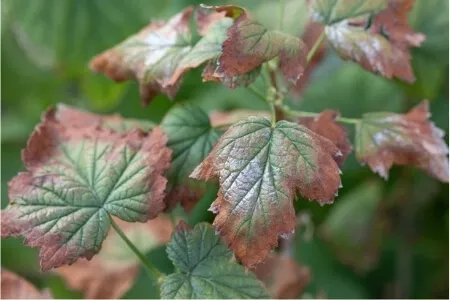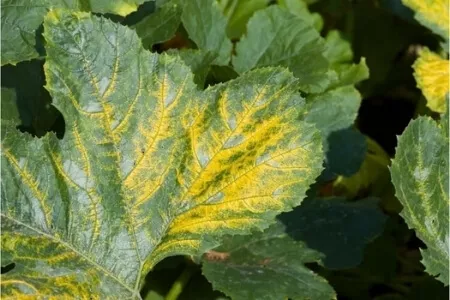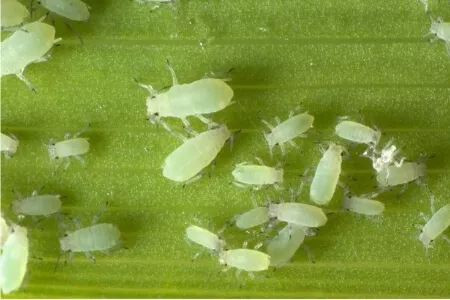Whether it’s their gorgeous variety of rainbow shades or the oversized, can’t-miss-it blossoms, dahlias definitely command attention!
Maybe you’ve marveled at their beauty in cut-flower arrangements or felt a touch of envy when you see them growing in someone else’s garden.
But even though they bring a high-drama look, dahlias are fairly easy to get started and care for. And with their extra-long growing season, you can enjoy their beauty all summer and into the fall.
Today, you’ll learn about the dahlia’s background and what makes it such a special addition to your flower garden. You’ll also discover how to grow dahlias from a humble tuber, and what pests you may have to contend with. Finally, we’ll answer some common questions about dahlia care.
Let’s jump in!
RELATED: Dahlias aren’t the only perennial with high-drama flowers. Check out our post on how to grow gladiolus for more colorful inspiration!
Table of Contents
Why Should You Grow Dahlias?
So why should you consider adding dahlias to your flower garden lineup? Here are a few reasons:
Easy to Care For
A dahlia’s striking looks might make it seem that they’re a high-maintenance plant that’s far above a novice grower’s skill.
Not so! As long as you plant them in an appropriate area and supply plenty of water at the right time, the dahlias will take it from there.
Incredible Array of Colors
The wide variety of color options is one of the main reasons dahlias are so popular.
Here are just a few:
- Red
- Peach
- White
- Yellow
- Lavender
- Pink
- Orange
Huge Blossoms
Dwarf dahlia varieties can have blossoms as small as 2 inches in diameter.
(Not exactly what you were expecting when you read “huge blossoms,” right?)
On the other hand, some varieties, known as dinner plate dahlias, produce blooms that can reach a massive 15 inches in diameter!
All you need is a single blossom and you’ve already got a stunning cut-flower display!
Gorgeous in Cut-Flower Arrangements
To continue on with the previous point, all dahlias (regardless of size) make a magnificent addition to floral arrangements.
With their wide array of colors, petal shapes and blossom structures, you can find a dahlia to complement any other flower.
Just be aware that the dahlia may end up stealing the show!
Long Growing Season
On average, dahlias have a growing season of 120 days at the very minimum.
This means that you’ll be able to enjoy the beautiful color for a third of the year on average!
Attracts Friendly Pollinators
Thanks to their bright colors, butterflies and bees just can’t pass up the chance to stop at a dahlia bed. According to Honey Bee Suite, dahlias with open centers seem to be especially appealing.
With the numbers of friendly pollinators in a concerning decline, planting dahlias can help boost your local friendly insect population.
Also, a dahlia plant’s long growing season can provide some healthy insect nourishment after other summer blossoms have faded.
How do Dahlias Grow?
As you can see, dahlias have a lot to offer! Let’s look at how you can get them started in your flower garden.
Dahlias grow from a specialized type of bulb known as a tuber. This is what they look like:

Some other tubers that you may be more familiar with are sweet potatoes and day-lilies.
The long, thin shape is one of the first things that stands out about tubers. You can also see in the photo that several tubers shoot out from the main stem in every direction.
Each of these growth outcroppings should have at least one “eye,” which is the site of new growth. You can divide the dahlia tuber into multiple smaller ones, and every piece will grow into a new plant.
Dahlias are the perfect flower for moderate, moist climates. You can still grow them if you live in a very hot or cold region, but you likely won’t get to enjoy their full effect.
Where to Find Dahlia Tubers
The healthiest and most beautiful dahlias start with high-quality tubers.
Dahlias are popular flowers, and they’re easy to find at a variety of sources.
One of the least expensive options is to ask someone who grows dahlias if they have any tubers they would be willing to spare. What’s more, your gardening friend obviously knows the ins and outs of growing dahlias, so they can be a rich source of information for you.
You can also turn to the internet to order the specific variety you want. Blooming Bulb is a fantastic source for unique dahlia colors and petal structures.
Big box stores and nurseries also usually have a nice selection of common dahlia varieties. And just in case that they don’t, they may be able to special-order them for you.
Bottom line: There are a wealth of options out there, and you shouldn’t run into too much trouble finding the exact dahlia you want.
How to Grow Dahlias: Planting Your Tubers
To enjoy the healthiest plants and most beautiful blooms, your dahlias need to get started off right.
Select Your Location
Dahlias thrive in well-draining soil and full sunlight, at least 8 hours every day.
Traditionally, most gardeners choose to plant their dahlias in an in-ground flower bed. While that remains a great option, it’s not your only one.
Growing dahlias in pots is an increasingly popular method. This is probably due to more people living in tighter urban and suburban settings, but it’s also a perfect solution if you don’t have a sunny patch of ground available.
If you need to, you could move your potted dahlias throughout the day to follow the sunlight. This will obviously take a little extra work, and you may find that a plant caddy with wheels is your best friend. Just set your pot on the caddy, and roll it around at will!
Prepare Your Soil
To promote the good soil drainage that dahlias love, use a small manual cultivator or powered tiller to break up large clumps of soil. If you prefer, a pitchfork and some elbow grease will also work.
If you have heavy clay soil, adding organic matter, like compost, helps improve drainage and nutrient levels.
With your soil prepared, you’re ready to dig your planting holes. Dig down at least 7 inches deep, and place your tuber in with its eye facing up. Then cover your tuber with soil and gently press down.
If you’re growing a tall dahlia variety or one that produces large, heavy blossoms, this is the perfect time to place a support stake. Since you just planted your tuber, you know its exact location and size. This lets you place your stake where needed with less risk of accidentally harming the tuber.
Now you’re ready to move on to your next hole, leading to the following point…
Use Proper Spacing Between Plants
If you’re planting multiple dahlias next to each other, make sure to leave a minimum of 2 feet between each tuber.
If they are any closer than this, they’ll not only be competing for nutrients from the soil, but they will also be battling for sunlight. This means that some of your dahlias may end up underdeveloped or even worse, dead.
Water One Time Only
After planting, give your dahlias tubers one drink and one drink only.
While most plants appreciate staying moist during the germination phase, dahlias do not. Excess water could lead to your tubers rotting in the ground and dying off.
So use restraint now, and your dahlias will thank you later!
Be Patient
It will probably be a few weeks before you spot any signs of dahlia life above ground. Just be patient, and periodically check for signs of sprouting.

Dahlia Care Tips
Now that you’ve got your dahlias in the ground and you’re seeing sprouts, it’s time to transition to a new care routine.
Let’s look at what your growing dahlias need:
Watering
We’ve already talked about the need to use a very light hand with water at planting time. But once your dahlia sprouts through the ground, it’s a totally different story!
Established dahlia plants like their soil to stay consistently moist. Plan to give about 1 inch of water weekly while your dahlia plant sets out foliage and buds.
Once you start to see blossoms, increase your watering to 2 inches per week. Using a soaker hose can be a perfect way to thoroughly water without straining your back.
Fertilizing
Dahlias appreciate some extra nutrition in the way of fertilizer throughout the growing season. But too much of a good thing can cause problems, so make sure you understand the proper fertilizing method.
Use a low-nitrogen formula. Nitrogen is often the friend of the flower gardener, but not in this case. High nitrogen levels could cause your dahlia to overproduce foliage and under-produce blossoms (which probably isn’t the look you’re going for!)
What’s more, high nitrogen can damage dahlia tubers, halting their growth or leading to decay.
Look for formulas marked 4-10-10, 5-10-10 or the equivalent.
Apply your first round of fertilizer once your dahlia has sprouted through the ground. Then reapply monthly throughout the growing season.
Overwintering Your Tubers
If you live in an area that experiences even occasional killing frosts, you’ll need to dig your dahlia tubers up in the fall and store them indoors during the winter.
If you live in zone 7 and lower, these overwintering instruction are for you.
Not quite sure which zone your area falls into? Consult this U.S. Forest Reserve map of USDA hardiness zones to find out.
There are a few methods that dahlia growers follow to keep their tubers healthy over winter, and you may have to do some experimenting to figure out a system that works for your particular situation.
These steps are based on tips from the University of New Hampshire Extension department.
You’ll need a storage area that remains above freezing but below 50 degrees. A refrigerator or cool basement are good options.
Allow all the dahlia’s foliage to die away completely, but leave it in place until you dig the tubers up. Typically, one frost is enough to kill off all the foliage.
Using a shovel or pitchfork, dig around your tubers to loosen the soil. Instead of pulling the tuber out by grasping the stem, carefully lift it out by sliding your hand underneath and supporting from below.
Give your tubers a gentle washing, just enough to remove any soil clinging to the surface.
Before you pack your tubers away for the winter, let them cure in the open air for a couple of days. Place them in a moderately warm area (about 60 to 70 degrees) that’s out of the sun. Make sure to examine your tubers for damage to the skin or any signs of rot or disease.
Dahlia tubers prefer an ambient humidity of about 70%, so pack healthy, cured tubers in slightly damp sand or peat moss. You can also loosely wrap your tubers in newspaper.
Store them in a cardboard box or plastic bin that allows for good airflow. Make sure to check on your tubers several times throughout the storage period, and discard any that have soft spots.
If you live in zone 8 or higher, hooray! Your tubers should do just fine in the ground all year long. Cut away spent foliage at the end of the growing season, and cover your dahlia bed with a generous layer of mulch.
Pine straw can be an excellent choice here. It adds a small amount of acid to the soil as it breaks down, which is just what dahlias like.
If you can’t get your hands on pine straw, dead leaves or wood chips can also work.
Dividing Dahlia Tubers
We briefly mentioned that each outcropping on the central dahlia tuber can grow into an individual plant. For this to happen, you’ll need to divide your tuber properly.
Although some growers prefer to divide their tubers in the fall after digging them up, dividing in the spring is the most common approach. That way, you don’t have to worry about any decay at the cut site.
Using a sharp knife, cut through the stem to separate new tubers. Each new tuber must have both a piece of the main stem and at least one eye.

See how these divided tubers each have either a pointy tip or a thread-like mass? These are the eyes, which is the site of new growth.
You can also see how each tuber has just a bit of the original stem remaining.
Your tuber is now ready to plant. Even if it seems a little tricky, you should get the hang of it after a little practice.
Potential Problems to Watch Out For
Just like every other plant on the planet, dahlias are at risk for pests and disease. But the sooner you can identify the problem, the more equipped you’ll be to take care of it.
Let’s look at some of the most common issues dahlia growers run into:
Tuber Fungus or Rot
The biggest threat your dahlias face comes from mold or rot damage to the tubers themselves.
Most often, these conditions happen when the tubers get exposed to cold, overly wet soil in the springtime.
You have three ways to keep your tubers healthy and strong:
- Wait until all danger of frost has passed before planting. This lets the soil come to a hospitable temperature for the warmth-loving dahlias tubers.
- Make sure the soil is loose and drains well, like we covered in the planting dahlia tuber section. This extra step helps prevent moisture retention around the delicate tuber.
- After planting, give your tubers a single drink, and then do not water any more until you see sprouts poking through the earth.
Insects
Dahlias are at risk for any type of sap drinking bug, the most common being thrips, leafhoppers and aphids.
- Thrips
- Leafhopper
- Aphids
Neem oil is an effective treatment for all three pests, and insecticidal soap also helps battle aphids and thrips.
Diseases
Dahlias can suffer from a few different diseases on their foliage or blossoms.
Here are the most common ones you might see:
Fungal diseases. All fungal diseases are spread by spores, which may be present in the ground or may travel with the wind.
Powdery and downy mildew are the most common offenders. They appear on the surface of dahlia leaves and flowers, causing white or gray textured spots. These spots can eventually spread to the whole plant and infect other plants as well.

Commercial anti-fungal treatments, like this one from Bonide, are effective for treating surface mildew diseases. Unfortunately, these are harsh chemicals that you may not want to use if you have children or pets that spend time near your flowerbeds.
Baking soda, either sprinkled around your dahlias or applied as a diluted spray, also shows promise for reducing surface fungal diseases. This article from the Spruce offers more details.
Viral diseases. Viruses can either live in the ground or be spread by insect vectors.
The most common viruses that plague dahlias include verticillium wilt and the mosaic virus family.


There are no effective treatments for viral plant diseases. The best course of action is to pull the affected plants immediately and destroy them before the virus infects your entire flowerbed.
Frequently Asked Questions about DWC for Beginners
Final Thoughts
Dahlias are an magnificent flower that can provide a dramatic boost to the appearance of any garden. And thanks to their bold colors and oversized blossoms, they also make a great bouquet flower.
Just give these beauties a home in full sun and plenty of water, then enjoy their cheerful color all season long!
Your turn! Have you ever grown dahlias? What was your experience like, and do you have any other tips to share?
Let us know in the comments!










